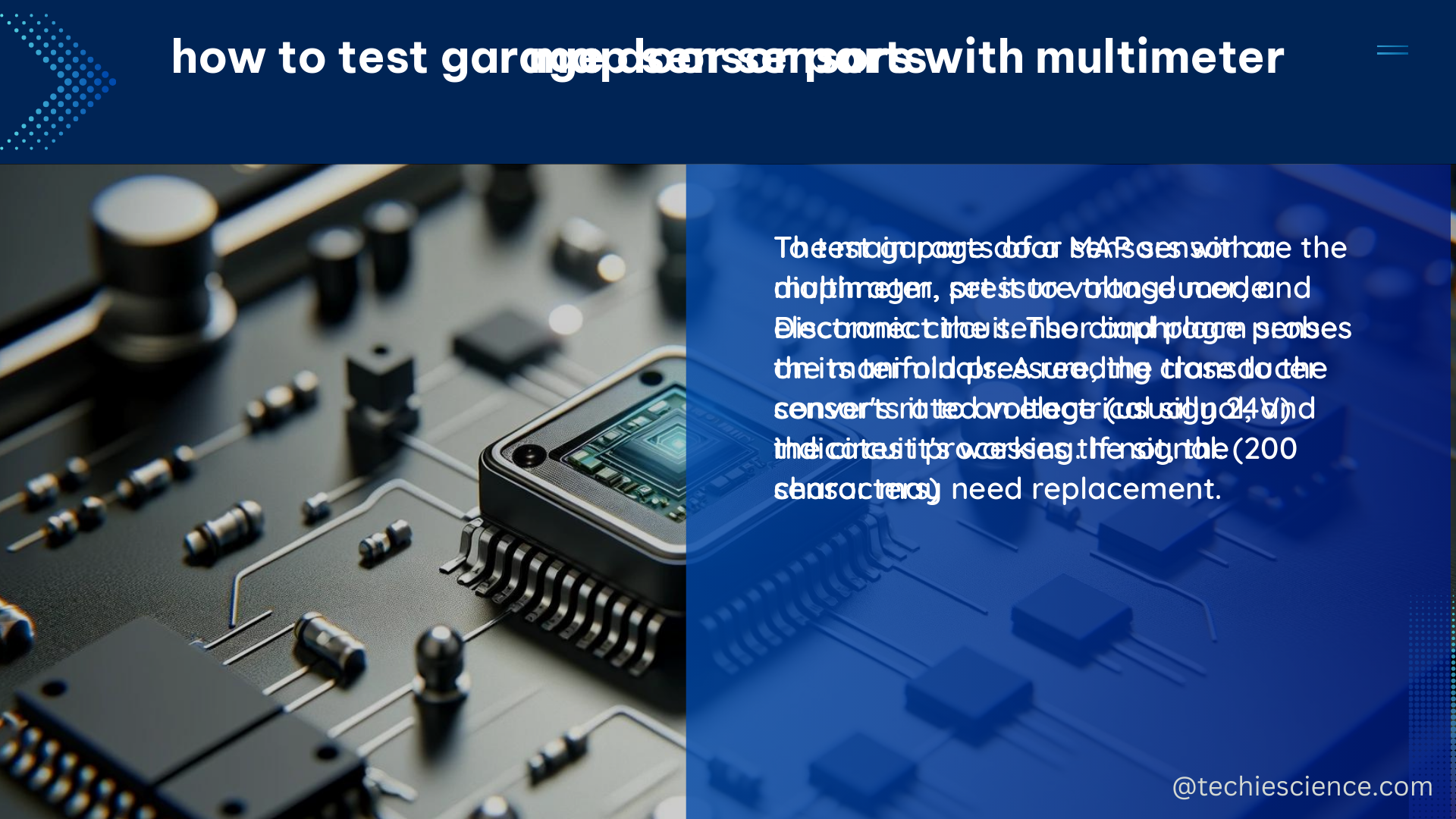A Manifold Absolute Pressure (MAP) sensor is a critical component in the electronic control system of an internal combustion engine. It measures the absolute pressure within the intake manifold, which is then used to calculate air density and determine the engine’s air mass flow rate. This information is essential for optimizing combustion and fuel metering, and the MAP sensor provides real-time manifold pressure data to the engine’s Electronic Control Unit (ECU) in fuel-injected engines.
Parts of a MAP Sensor
A typical MAP sensor consists of two main components:
-
Sensing Element: This is the core of the MAP sensor, responsible for measuring the air pressure inside the intake manifold. The sensing element converts the pressure into an electrical signal.
-
Electronic Circuit: The electronic circuit processes the electrical signal from the sensing element and transmits it to the ECU as a voltage signal, which the ECU can then use to make adjustments to the air-fuel ratio and ignition timing.
The sensing element in a MAP sensor is typically a piezoresistive pressure transducer, which uses a silicon diaphragm to convert the pressure into an electrical resistance change. This resistance change is then converted into a voltage signal by the electronic circuit.
Technical Specifications of a MAP Sensor

The technical specifications of a MAP sensor are crucial for ensuring accurate and reliable engine performance. Here are the key specifications to consider:
Measurement Range
- The MAP sensor should have a wide measurement range, typically from 0 to 5 volts, to accurately measure the pressure difference between the intake manifold and atmospheric pressure.
- This wide range allows the sensor to provide accurate readings across a variety of engine load conditions, from idle to full throttle.
- For example, a common MAP sensor measurement range is 0-5 bar (0-72.5 psi), with a corresponding voltage output of 0-5 VDC.
Accuracy
- The MAP sensor must provide accurate readings even under varying engine load conditions, as this information is critical for the ECU to make precise adjustments to the air-fuel ratio and ignition timing.
- Typical MAP sensor accuracy is within ±1.5% of the full-scale reading, ensuring reliable data for the engine control system.
- Some high-end MAP sensors can achieve even greater accuracy, with tolerances as low as ±0.5% of the full-scale reading.
Durability
- The MAP sensor must be durable enough to withstand the harsh operating conditions of an internal combustion engine, including exposure to heat, vibration, and contaminants.
- Sensors are typically constructed with rugged materials, such as stainless steel or aluminum, to ensure long-term reliability.
- Many MAP sensors also feature protective coatings or housings to shield the sensitive components from environmental factors.
Response Time
- A fast response time is crucial for the MAP sensor to provide accurate, real-time pressure readings to the ECU.
- Typical MAP sensor response times are in the range of 1-10 milliseconds, allowing the engine control system to quickly adapt to changes in engine load and operating conditions.
- Faster response times, such as 1-5 milliseconds, are often found in high-performance or racing applications where engine dynamics change rapidly.
Temperature Compensation
- MAP sensors are designed to provide accurate readings across a wide range of operating temperatures, typically from -40°C to 125°C (-40°F to 257°F).
- This is achieved through the use of temperature compensation circuits, which adjust the sensor’s output to account for changes in ambient temperature.
- Accurate temperature compensation ensures that the MAP sensor maintains its precision and reliability, even in extreme environmental conditions.
Electrical Characteristics
- MAP sensors typically operate on a 5-volt supply voltage provided by the ECU.
- The sensor’s output signal is a variable voltage, usually ranging from 0 to 5 volts, which corresponds to the measured intake manifold pressure.
- The sensor’s electrical resistance can vary, but a common range is 1-6 kΩ, depending on the specific sensor design and manufacturer.
MAP Sensor Parts DIY Replacement
Replacing a faulty MAP sensor involves the following steps:
- Locate the MAP sensor, which is typically mounted on the intake manifold or in close proximity to the engine.
- Disconnect the electrical connector from the MAP sensor, taking care to avoid damage to the wiring harness.
- Remove the MAP sensor from the intake manifold, which may involve unscrewing it or using a specialized tool.
- Install the new MAP sensor, ensuring that it is properly seated and secured in the intake manifold.
- Reconnect the electrical connector, making sure it is fully seated and locked in place.
- Clear any diagnostic trouble codes and reset the ECU, if necessary, to ensure the new sensor is properly recognized and integrated into the engine control system.
It’s important to use a replacement MAP sensor that is compatible with your specific vehicle make, model, and engine. Refer to the manufacturer’s recommendations or consult a professional technician to ensure the correct part is installed.
References
- MAP Sensor Working, Structure, and Types
- MAP Sensor Working Principles, Features, and Types Comparison
- Understanding MAP Sensors
- MAP Sensor

The lambdageeks.com Core SME Team is a group of experienced subject matter experts from diverse scientific and technical fields including Physics, Chemistry, Technology,Electronics & Electrical Engineering, Automotive, Mechanical Engineering. Our team collaborates to create high-quality, well-researched articles on a wide range of science and technology topics for the lambdageeks.com website.
All Our Senior SME are having more than 7 Years of experience in the respective fields . They are either Working Industry Professionals or assocaited With different Universities. Refer Our Authors Page to get to know About our Core SMEs.